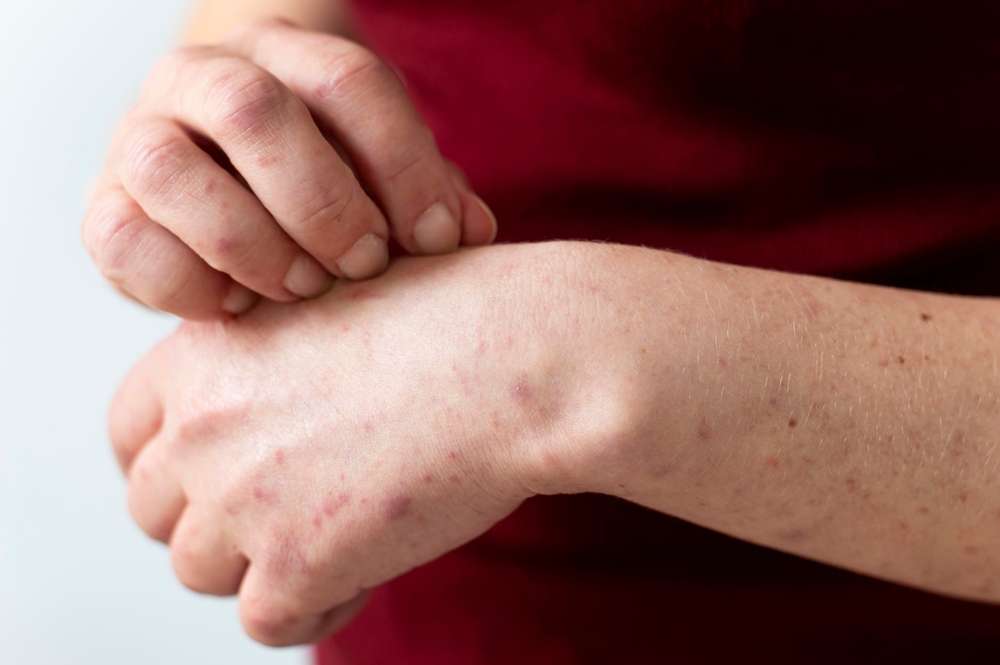Plaque Psoriasis in Seniors: From Visual Signs to Effective Treatment Options
Plaque psoriasis can manifest differently in seniors, often presenting unique challenges beyond just visible skin patches. Understanding what plaque psoriasis looks like is merely the initial step towards effective management. This comprehensive guide delves into tailored treatment options and advanced management strategies specifically designed for older adults. Our aim is to provide clear insights, empower you with knowledge, and discuss how current medical approaches can significantly help improve skin health and overall well-being for seniors affected by this condition.

What are the visual signs of plaque psoriasis in seniors?
Plaque psoriasis in seniors typically appears as raised, red patches covered with a silvery-white buildup of dead skin cells, known as scales. These patches, or plaques, most commonly occur on the elbows, knees, scalp, and lower back. However, in older adults, the presentation may differ slightly. Seniors might experience:
-
Thinner plaques due to age-related skin changes
-
More pronounced scaling and dryness
-
Increased occurrence on hands and feet
-
Less defined borders of the plaques
-
Potential confusion with other age-related skin conditions
It’s crucial to note that plaque psoriasis in seniors may be less inflamed or red compared to younger individuals, making proper diagnosis essential.
How does plaque psoriasis uniquely affect older adults?
Plaque psoriasis presents distinct challenges for seniors beyond its visual manifestation. The condition can significantly impact quality of life and overall health in ways specific to older adults:
-
Increased risk of complications due to weakened immune systems
-
Potential interactions with medications commonly taken by seniors
-
Exacerbation of existing age-related skin fragility
-
Higher likelihood of joint involvement (psoriatic arthritis)
-
Greater impact on mobility and daily activities
-
Psychological effects, including social isolation and depression
Understanding these unique challenges is crucial for developing an effective treatment plan tailored to the needs of older patients.
What are effective treatment options for plaque psoriasis in seniors?
Treatment for plaque psoriasis in seniors should be carefully tailored, considering age-related factors and potential comorbidities. Effective options include:
-
Topical treatments: Corticosteroids, vitamin D analogs, and moisturizers
-
Phototherapy: Controlled exposure to UV light
-
Systemic medications: Methotrexate, cyclosporine, or newer biologic drugs
-
Combination therapies: Using multiple treatment modalities for enhanced efficacy
-
Lifestyle modifications: Dietary changes and stress reduction techniques
It’s important to note that treatment plans should be developed in close consultation with a dermatologist or healthcare provider specializing in geriatric care to ensure safety and effectiveness.
How can seniors manage plaque psoriasis holistically?
Managing plaque psoriasis in seniors extends beyond medical treatments. A holistic approach can significantly improve overall well-being and symptom management:
-
Maintaining a healthy diet rich in anti-inflammatory foods
-
Regular, gentle exercise to improve circulation and reduce stress
-
Proper skin care routines, including gentle cleansing and moisturizing
-
Stress reduction techniques such as meditation or yoga
-
Joining support groups or counseling to address psychological impacts
-
Adapting living spaces to accommodate mobility challenges if necessary
These holistic strategies, when combined with medical treatments, can lead to better outcomes and improved quality of life for seniors with plaque psoriasis.
What are the latest advancements in plaque psoriasis treatment for older adults?
Recent advancements in plaque psoriasis treatment have opened new possibilities for managing the condition in seniors:
-
Targeted biologic therapies with fewer side effects
-
Novel small molecule inhibitors for more precise treatment
-
Advanced topical formulations for improved efficacy and comfort
-
Personalized medicine approaches based on genetic profiling
-
Innovative light therapy devices for at-home use
-
Combination therapies that enhance results while minimizing side effects
These advancements offer promising options for seniors who may not have responded well to traditional treatments or who require more tailored approaches due to age-related factors.
How can seniors find the right plaque psoriasis treatment plan?
Finding the right treatment plan for plaque psoriasis in seniors involves careful consideration and collaboration with healthcare providers. Here’s a comparison of treatment approaches to help guide decision-making:
| Treatment Approach | Potential Benefits | Considerations for Seniors |
|---|---|---|
| Topical Treatments | Low systemic side effects, easy to apply | May be less effective for extensive psoriasis, requires consistent application |
| Phototherapy | Non-invasive, effective for widespread psoriasis | Requires frequent clinic visits, potential skin cancer risk |
| Systemic Medications | Highly effective for severe cases | Potential for more significant side effects, drug interactions |
| Biologic Therapies | Targeted approach, fewer side effects | Higher cost, requires injections or infusions |
| Combination Therapies | Enhanced efficacy, may reduce individual drug doses | Requires careful monitoring for interactions and side effects |
Prices, rates, or cost estimates mentioned in this article are based on the latest available information but may change over time. Independent research is advised before making financial decisions.
When selecting a treatment plan, seniors should consider factors such as the severity of their condition, overall health status, medication interactions, and lifestyle preferences. Regular follow-ups and open communication with healthcare providers are essential for optimizing treatment outcomes and addressing any concerns that may arise.
In conclusion, managing plaque psoriasis in seniors requires a comprehensive approach that addresses both the physical symptoms and the unique challenges faced by older adults. By understanding the visual signs, exploring effective treatment options, and embracing holistic management strategies, seniors can significantly improve their quality of life while living with plaque psoriasis. As research continues to advance, new and more targeted therapies offer hope for even better management of this chronic condition in the aging population.
This article is for informational purposes only and should not be considered medical advice. Please consult a qualified healthcare professional for personalized guidance and treatment.




